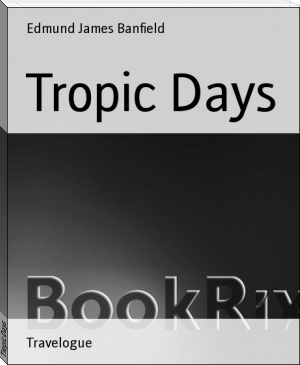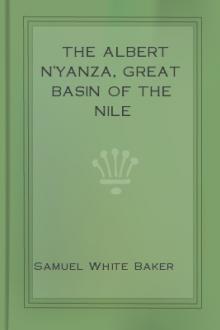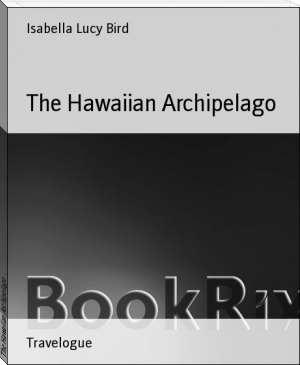Confessions of a Beachcomber, Edmund James Banfield [easy readers txt] 📗

- Author: Edmund James Banfield
Book online «Confessions of a Beachcomber, Edmund James Banfield [easy readers txt] 📗». Author Edmund James Banfield
Remembering the fervid praises of the treasures by those who had not seen them, a sense of disappointment when they came to be examined was inevitable. They are not to be classed in any standard beyond that displayed on early school-slates; but imperfect as they are, they possess a certain symmetry and proportion, and the facts that they are where they are, and that the artist--dead and forgotten--had no light or leading, and was in other respects probably one of the most rude, most uncouth of human beings, are sufficient to lend to the drawings an interest as absorbing (though of a nature quite apart) as that with which the average individual contemplates the stiff works of masters of Continental fame.
One able critic of aboriginal art refers to similar rock paintings as frescoes, for lack of a significant title. Apparently the rock surface was slightly smoothed where inequalities existed--in one case the design follows the ridges and hollows--the subjects being worked in, in dry earth of a chalky nature, dull red in colour. Animated nature and still life have been studied and reproduced. The turtle is true, and the most conspicuous and sharply-defined study the least convincing. It resembles those fantastic interwoven shapes that some men in fits of abstraction or idleness sketch on their own blotting-pads, and which signify nothing.
Comparing the works of the two studios, there is little doubt that there were at least two artists native of Dunk Island in times past, and in that respect the island was infinitely superior to its present state. Each appears to have effected a different kind of work--one devoting himself to realistic reptiles and the human form debased, and the other almost solely to the creation of conventional designs, and the representation of the animals and of weapons of his age. One illustrated man, and even gave to one of his reptiles a semi-human shape; the other exercised an exuberant fancy for ornamentation. Each bequeathed to the present day and generation works that are at least free from the subtleties of art.
Most of us have had moments of rapture before the glowing embodiment of the inspiration of some great artist, whose gifts have been developed to maturity by enthusiastic and patient striving for perfection. Do not these clumsy drawings, too, reveal that which, considering their environment, is talent--original and unacademic. Here is the sheer beginning, the spontaneous germ of art, the labouring of a savage soul controlled by wilful aesthetic emotions. For these pictures are not figurative, not mere signs and symbols capable of elucidation, but the earliest and only efforts of an illiterate race, a race in intellectual infancy, towards the ideal--a forlorn but none the less sincere attempt to reach the "light that quickens dreams to deeds!"
The last of the series of "Black Art" pictures is not local. It occurs on the reverse of a shield, the spear-punctured lower edge of which verifies its eventful history. The warrior-artist silhouetted a sweetheart's figure, where, at supreme moments, it came before his fancy and gave the battle to his hands.
A POISONOUS FOOD
One of the chief vegetable foods of the blacks is the fruit of "tinda-burra" (Moreton Bay chestnut--CASTANOSPERMUM AUSTRALE). The plentiful pea-shaped flowers range in colour from apple-green, pale yellow, orange to scarlet, and contain large quantities of nectar, which attracts multitudes of birds and insects. Blacks regard this tree with special favour and consideration. A casual remark, as I observed the industry of insects about the flowers, that the bean-tree was good for bees, elicited the scornful response, "Good for man!" The tree is of graceful shape, the bole often pillar-like in its symmetry, and the wood hard and durable and of pleasing colour, and so beautifully grained that it is fast becoming popular for furniture and cabinet-making. It bears a prolific crop of large beans, from two to five in each of its squat pods, but they are, as Mr Standfast found the waters of Jordan, "to the palate bitter, and to the stomach cold," and require special treatment in order to eliminate a poisonous principle. Many chemists analysed the beans (one finding that they may be converted into excellent starch) without discovering any noxious element; but as horses, cattle, and pigs die if they eat the raw bean, and a mere fragment is sufficient to give human beings great pain, followed by most unpleasant consequences, the research was continued, until within quite a recent date the presence of saponin was detected. Before science made its discovery, the blacks were very positive on the point of the poisonous qualities of the bean, and took measures to eliminate it. In some parts of the State the beans, after being steeped in water for several days, are dried in the sun, roasted in hot ashes, and pounded between stones into a coarse kind of meal, which may be kept for an indefinite period. When required for use the meal is mixed with water, made into a thin cake or damper, and baked in the ashes. Prepared in this way the cake resembles a coarse ship's biscuit. In other parts, the beans are scraped by means of mussel-shells into a vermicelli-like substance, prior to soaking in water. Our blacks have a more ingenious method of preparation, and employ a specially formed culinary implement, which is used for no other purpose. They take the commonest of the land shells--"kurra-dju" (XANTHOMELON PACHYSTYLA)--and breaking away the apex grind down the back on a stone until but little more than half its bulk remains. The upper edges being carefully worked to a fine edge, the only housewifery implement that the blacks possess is perfect. With the implement in the right hand, between the thumb and the second finger--the sharp edge resting on the thumb-nail--the beans are planed, the operator being able to regulate the thickness of the shaving to a nicety.
It is women's work to collect the beans, make the shell-planes, and do the shredding. In the first place the beans are cooked, the oven consisting of hot stones covered with leaves. In three or four hours they are taken out and planed, a dilly-bag (basket made of narrow strips of lawyer cane or grass) full of the shavings is immersed in running water for two or three days, the food being then ready for consumption without further preparation. In appearance it resembles coarse tapioca, and it has no particular flavour. To give it zest, some have a shell containing sea-water beside them when they dine, into which each portion of the mess is dipped. As saponin is very soluble in water, by soaking the shredded beans for a few days the blacks resort to an absolutely perfect method of converting a poisonous substance into a valuable and sustaining, if tasteless, food. No doubt, made up into a pudding with eggs, milk, sugar and flavouring, shredded beans would pass without comment as a substitute for tapioca.
MESSAGE-STICKS
There came to our beach one afternoon some poor exiles from Princess Charlotte Bay--300 miles to the north. Exiled they felt themselves to be, and were longing to return to their own country although their engagement for a six months' cruise in quest of the passive beche-de-mer had but just begun. One boy stepped along with an air of pride and importance. His companions were deferential to a certain extent, but they, too, exhibited an unusual demeanour. Some of the glory and honour that shone in Mattie's face was reflected in theirs. With the assurance of an ambassador bearing high credentials he saluted me--
"Hello, Mister! Good day."
"Good day," I responded. "You come from that cutter?"
Mattie--"Yes, mister. Mickie sit down here, now? Me got 'em letter. Brother belonga gin, belonga Mickie; him gib it!"
"No; Mickie sit down alonga Palm Islands. Come back, bi'mby."
Mattie (with a downcast air)--"My word! Bo'sun (the brother-in-law) gib it letter belonga Mickie."
"Where letter?" I asked.
Mattie--"Me got 'em," and drawing out a very soiled little parcel, he proudly exposed a piece of greyish wood, about the size and shape of a lead pencil, on which had been cut two continuous intersecting grooves. "Me giv' 'em Mickie; Bo'sun alonga Cooktown. He want to come up this way now."
The letter was a mere token of material expression of the fact that the sender was in the land of the living, and of his faith in the bearer, who was charged with all the personal messages and news. It was a sad rebuff to Mattie, elated with responsibility and eager to unburden himself of the latest domestic intelligence, to find that Mickie was not on the spot to receive it all. And, after fondling the wooden document for a while, he wrapped it up and carefully bestowed it within the bosom of his shirt. The disappointment was general. The gleam faded from the faces of the boys. For several days, first one and then another was entrusted with the honourable custody of the missive. Whoever possessed it for the time being was the most favoured individual. His worthiness for the office he acknowledged with an amusing air of self-consciousness and pride. The transmission of a letter is not an ordinary occurrence, and though there is an entire absence of form and ceremony in its delivery, the rarity of the event lends to it novelty and importance.
Aboriginal letters are of great variety, and some there are who profess to interpret them. The despatches are, however, invariably, in my experience, transmitted from hand to hand, the news of the day being recapitulated at the same time. It is not essential that the unstudied cuts and scratches on wood should have any significance or be capable of intelligible rendering. Though blacks profess to be able to send messages by means of sticks alone, the pretension is not recognised by those who have crucially investigated it
On a certain station a youthful son of the proprietor was accidentally drowned in a creek not far from the homestead. The grief of the parents was participated in by all engaged on the station, for the boy, full of promise, had been a general favourite. None seemed more sorrowful and gloomy than the blacks camped in the neighbourhood, and when the first shock of sorrow was of the past, they were eager to send the news to distant friends. A letter was laboriously composed. It was a short piece of wood, narrow and flat; an undulating groove ran from end to end on one side, midway was an intersecting notch. These were the principal characteristics, but there were other small marks and scratches. Bearing this as his credentials, a messenger departed, and in a week or so members of camps hundreds of miles away had seen the letter and were in possession of all the details of the





Comments (0)